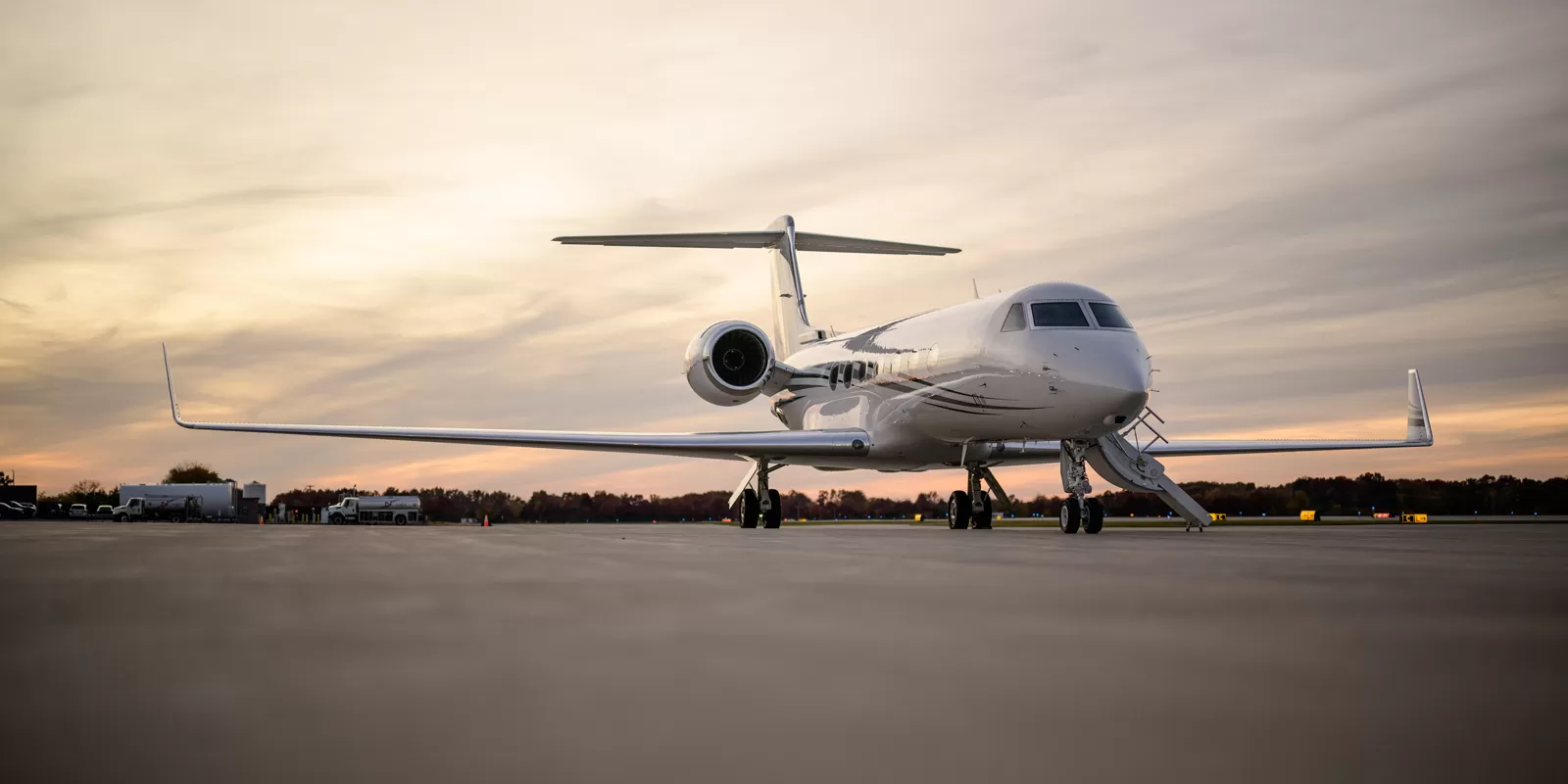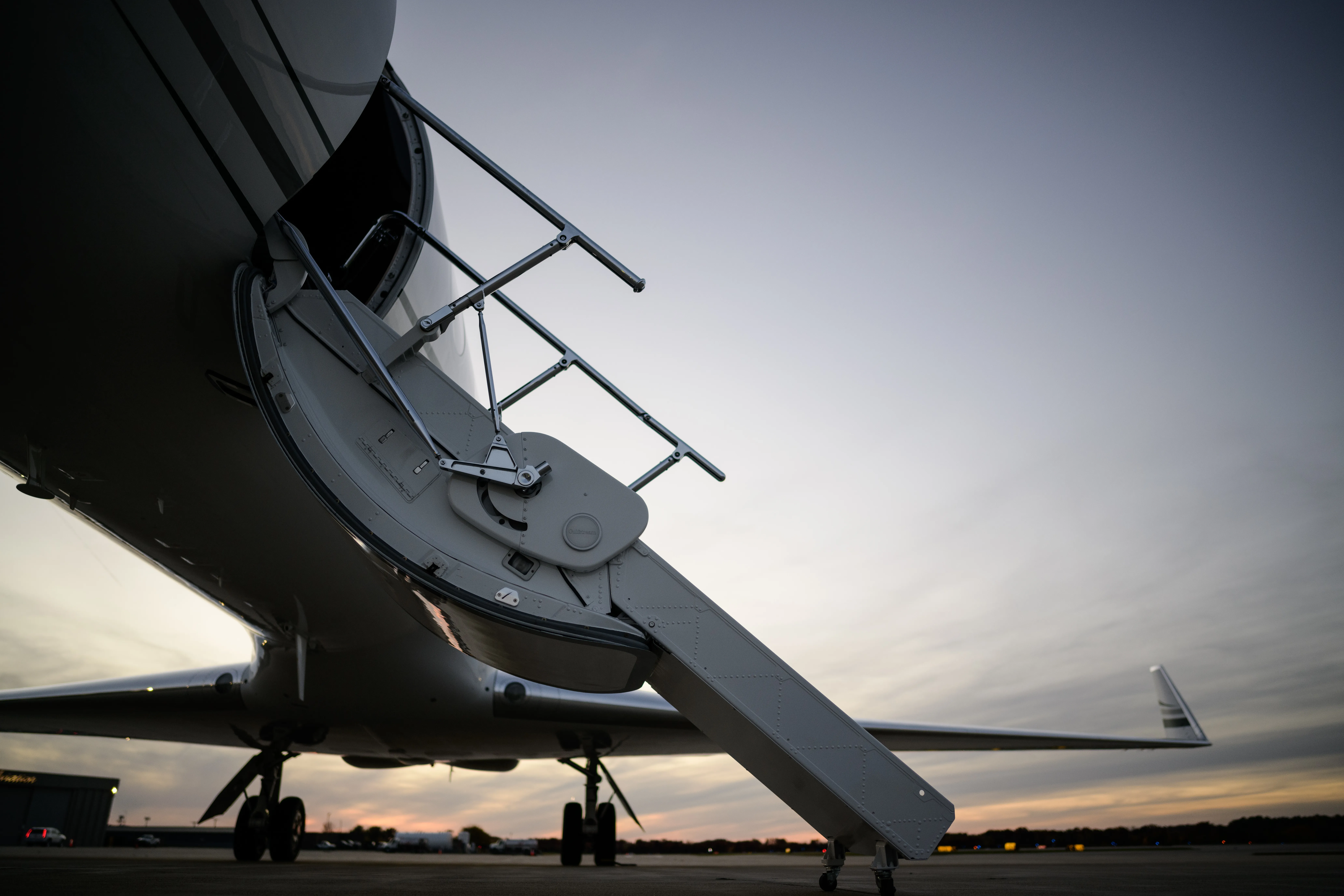
Chartering the Course: Q & A with the Pentastar Charter Team
Jun 11, 2024
Pentastar’s fleet of private charter aircraft services both regional and international travelers. Because Pentastar maintains a full charter services operation that includes both managed aircraft and an expansive network of vetted global partners, we are able to provide charter clients with the ideal aircraft to take them wherever they need to go.
We talked to Justin Hunt, Pentastar’s Charter Sales Manager, and Whitney Gates, a Pentastar Charter Sales Professional with a resume of diverse aviation experience that ranges from Corporate Flight Attendant and Manager of Inflight Services to Dispatcher and Flight Planner, about Pentastar’s charter operation. Together, they have nearly half a century of aviation experience, much of it in the charter services space. We asked Justin and Whitney to give us an insider’s perspective about what charter services work really entails, why it’s important, what charter customers are looking for, and what role charter plays in the Pentastar Aviation ecosystem.
(Note: while the interview was conducted with both Justin and Whitney, their answers have been edited and combined into one collective response for clarity and concision)
Tell us a little about your role(s) at Pentastar and what day-to-day work in charter services looks like.
Justin: We’re responsible for managing overall sales for Pentastar’s charter services department. In short, that entails selling, planning, and supporting charter trips to both new customers and managed accounts—those owners who may need additional aircraft or temporary replacements when theirs are undergoing maintenance. Part of our work is straightforward sales, providing quotes for charter options in our fleet or in an off-fleet aircraft. But there’s obviously a lot more that goes into it. We essentially function as a kind of charter concierge or private travel consultant: providing existing and prospective clients with expert counsel about what type of aircraft to use, which airports to fly into, etc.—everything from luggage capacity to plane amenities.
How many charter aircraft does Pentastar manage?
Whitney: Out of the 30 aircraft we manage, only five or so are available for third-party charter bookings. However, we supplement our in-house fleet with a large network of approved charter operators that we work with on a regular basis. This provides our charter clients with a much wider range of options when it comes to aircraft and travel flexibility. Because we always work to optimize the customer’s options, a certain percentage of our charter is booked off fleet in any given month. We prioritize safety above all else, which is why we have implemented a strict vetting process for third-party operators who wish to work with us. To be a member of the Pentastar Network, a charter partner must pass our strict screening protocols and adhere to our Vendor Operator Standards Agreement (VOSA).
What are charter customers looking for when they come to Pentastar?
Justin: It varies from one client to the next, of course, but price is certainly a key consideration for many charter clients. In terms of the aircraft itself, some clients prioritize range and the convenience of a nonstop flight, while others are comfortable with stops if it means a smaller aircraft and a smaller price tag. Almost every client wants a certain degree of comfort and connectivity in the cabin—but some customers are more focused on newer planes with high-end interiors. Because every customer is unique and has their own set of preferences and priorities, our job is about listening—and delivering.
Tell us about Part 135 and how it can create additional revenue for managed customers.
Whitney: As a Part 135 carrier, Pentastar makes it possible for our managed clients who elect to make their aircraft available for charter flights to generate revenue to offset some of their costs. The costs of maintenance, training, insurance, pilot salaries, and other essential line items that come with owning or leasing an aircraft can be considerable. Opening up that aircraft to charter service can defray some of that cost. Each one of our owners needs to decide if that approach makes sense for them. The answer depends on everything from personal preference to their annual travel needs and flight flexibility.
How has charter changed in recent years? How do you keep pace with trends?
Justin: Technology is one of the biggest and most obvious answers—both the technology in the aircraft themselves and the tech we use on the back end: from programs we use to assist with scheduling and quoting, to sophisticated flight management software. From a societal standpoint, the last few years have obviously been eventful, and not just for the aviation industry. We seem to be fully past the pandemic ups and downs and back to the normal flow of charter flights. One of the interesting aspects of charter work is that the ebb and flow of demand can change so dramatically over time. We need to be ready to deliver to a wide range of clients because we never really know how their priorities will evolve. For some time during, and shortly after the pandemic, a larger percentage of our business was leisure travel. That has trended significantly back to business more recently, which is probably an encouraging sign for the economy and a return to normalcy.
What do clients ask the most when it comes to charter? Do you do more advising than responding to client requests?
Whitney: Because almost all aircraft today have Wi-Fi and other amenities, and because we have high standards for safety and professionalism in our fleet and in our brokered charter business, one of the biggest aspects of our work is about logistics and convenience: working with clients to make their charter travel experience as comfortable and affordable as possible. It’s worth noting that we have a kind of built-in advantage in that regard, simply because of the professional experience and continuity in the Pentastar charter department. We have worked together—and with largely the same group of people around us—for well over a decade. That kind of family feel is rare in this business. It helps that Pentastar is not owned by or beholden to a larger corporate entity. We can set and adhere to our own high standards. In turn, Pentastar gives us a great deal of autonomy and flexibility when it comes to delivering for our charter clients. Which is critical in an unpredictable job like this. Because with many charter operators in the marketplace, it’s important that our clients are completely confident in the personnel, aircraft, and service excellence in every Pentastar charter flight. We are on the front lines in that effort, and it’s an exciting place to be.

